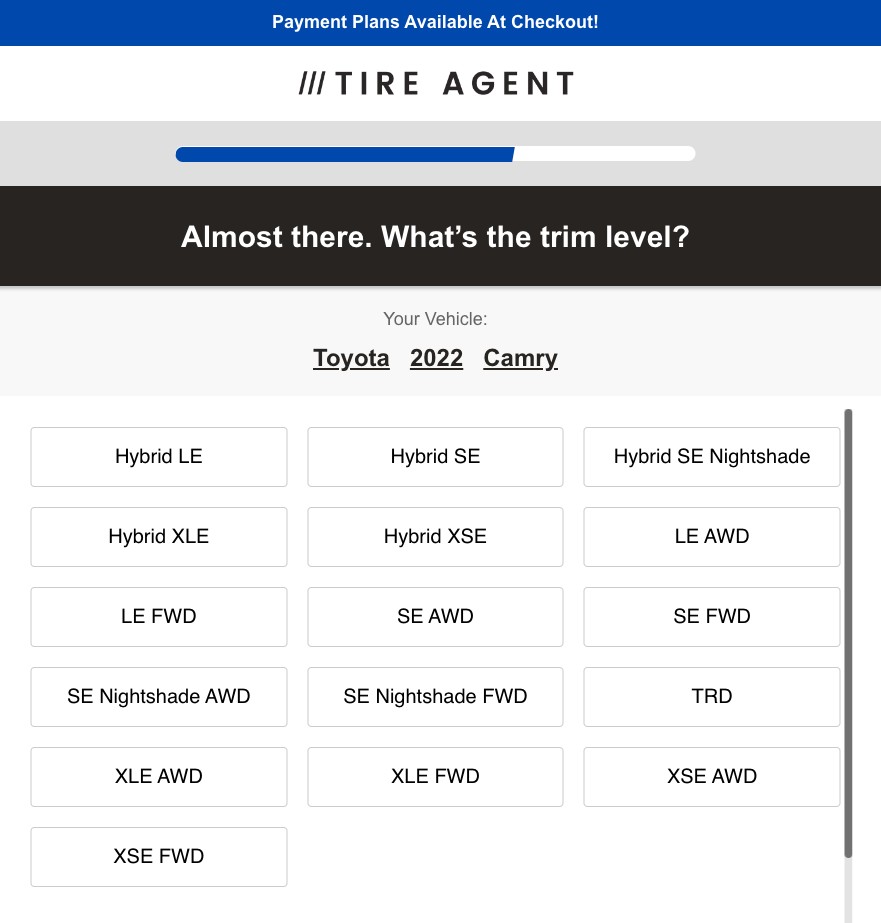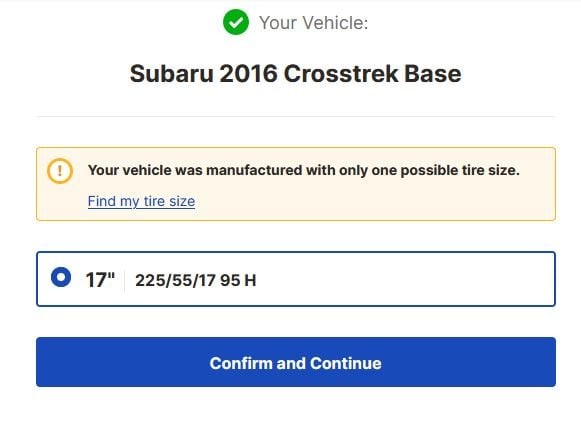Figuring out how to tell what trim your car is is essential for proper maintenance and selecting the right parts. CARS.EDU.VN simplifies this process, ensuring you get the perfect fit every time. Understanding your car’s specific configuration helps avoid costly errors and enhances your vehicle’s performance with appropriate auto parts, body trim, and vehicle options.
1. What Is a Car Trim and Why Does It Matter?
A car trim refers to a specific version of a particular vehicle model. Manufacturers offer various trim levels, each with unique features, equipment, and performance characteristics. Understanding your car’s trim level is crucial for several reasons:
- Accurate Parts Selection: Different trims often require different parts, such as tires, brakes, and suspension components. Knowing your trim ensures you purchase the correct parts for your vehicle, preventing fitment issues and potential safety hazards.
- Performance Optimization: Each trim level is often designed with specific performance characteristics in mind. Using the correct parts and accessories for your trim level helps maintain and optimize your vehicle’s performance.
- Resale Value: Knowing your car’s trim level can also impact its resale value. Higher trim levels with more features and equipment generally command higher prices on the used car market.
2. Decoding Your Car’s Trim Level
Identifying your car’s trim level can be done through several methods:
2.1. Consult Your Owner’s Manual
Your owner’s manual is a treasure trove of information about your vehicle, including its trim level. Locate the section that provides vehicle specifications, and you should find the trim level listed there.
2.2. Check Your Vehicle’s VIN (Vehicle Identification Number)
The VIN is a unique 17-character code that identifies your vehicle. It contains information about the manufacturer, model, year, and trim level. You can find the VIN in several places:
- Dashboard: On the driver’s side, near the windshield.
- Doorjamb: On the driver’s side doorjamb.
- Vehicle Registration: On your vehicle registration documents.
- Insurance Card: On your insurance card.
Once you have the VIN, you can use a VIN decoder tool online to retrieve information about your car, including its trim level. Several free VIN decoder tools are available, such as the one at CARS.EDU.VN.
2.3. Inspect Exterior Badges and Emblems
Many manufacturers will display the trim level on the exterior of the vehicle, typically on the trunk, doors, or front fenders. Look for badges or emblems that indicate the trim level, such as “LE,” “SE,” “XLE,” or “Limited.”
2.4. Review Original Sales Documents
If you purchased your car new, the original sales documents should clearly state the trim level. Review the purchase agreement, window sticker, or other sales-related documents to find this information.
2.5. Contact Your Local Dealership
If you’re still unsure about your car’s trim level, contact your local dealership. Provide them with your VIN, and they should be able to identify the trim level for you.
3. Understanding Common Trim Level Designations
Manufacturers use various designations to identify different trim levels. Here are some common examples:
- Base: The most basic trim level, typically with the fewest features and lowest price point.
- LE (Luxury Edition): A step up from the base trim, offering more features and amenities.
- SE (Sport Edition): A trim level that emphasizes sporty styling and performance.
- XLE (Executive Luxury Edition): A higher-end trim level with even more luxury features and amenities.
- Limited: The highest trim level, offering the most features and equipment.
- TRD (Toyota Racing Development): Performance-oriented trim, tuned for optimal driving dynamics.
- Sport: A trim level that focuses on enhanced aesthetics and performance features.
- Premium: Typically includes upgraded interior materials and technology.
4. How Trim Levels Impact Vehicle Features and Specifications
Trim levels affect various aspects of your vehicle, including:
4.1. Engine and Transmission
Higher trim levels may offer more powerful engines or upgraded transmissions. For example, a base trim might have a 4-cylinder engine, while a higher trim could have a V6.
4.2. Interior Features
Trim levels can significantly impact interior features such as:
- Upholstery: Base trims often have cloth seats, while higher trims may offer leather or premium fabric options.
- Technology: Higher trims may include advanced technology features like larger infotainment screens, premium sound systems, and navigation systems.
- Comfort: Features like heated seats, sunroofs, and automatic climate control are often exclusive to higher trim levels.
4.3. Exterior Styling
Exterior styling differences between trim levels can include:
- Wheels: Higher trims often have larger or more stylish wheels.
- Grille: The grille design may vary between trims.
- Lighting: Higher trims may have LED headlights or fog lights.
- Body Kits: Sportier trims may include unique body kits or aerodynamic enhancements.
4.4. Safety Features
Advanced safety features like blind-spot monitoring, lane departure warning, and adaptive cruise control are often included in higher trim levels.
5. How to Find Your Trim Level on Common Car Brands
Here’s how to locate the trim level on some of the most common car brands:
5.1. Toyota
- Location: Look for badges on the rear of the vehicle, typically on the trunk or liftgate. Common Toyota trim levels include LE, SE, XLE, and Limited.
- VIN Decoder: Use a VIN decoder tool to identify the trim level based on your vehicle’s VIN.
5.2. Honda
- Location: Check for badges on the rear of the vehicle, usually on the trunk or liftgate. Common Honda trim levels include LX, EX, EX-L, and Touring.
- Owner’s Manual: Consult your owner’s manual for a complete list of features and specifications for your specific trim level.
5.3. Ford
- Location: Look for badges on the rear of the vehicle, typically on the trunk or liftgate. Common Ford trim levels include S, SE, SEL, Limited, and Platinum.
- Window Sticker: If you have the original window sticker, it will clearly list the trim level and included features.
5.4. Chevrolet
- Location: Check for badges on the rear of the vehicle, usually on the trunk or liftgate. Common Chevrolet trim levels include LS, LT, Premier, and High Country.
- Online Resources: Visit the Chevrolet website and enter your VIN to access detailed information about your vehicle’s trim level.
5.5. BMW
- Location: BMW often uses a series designation followed by trim-specific options. Check the model designation (e.g., 320i, 530i) and look for additional badges like “Sport Line” or “M Sport.”
- VIN Decoder: BMW-specific VIN decoders can provide detailed information about factory-installed options and trim configurations.
6. Case Studies: Real-World Examples of Trim Level Differences
To illustrate the importance of knowing your car’s trim level, let’s examine a few real-world examples:
6.1. Toyota Camry: LE vs. XSE
A Toyota Camry LE is the base trim, offering standard features and a fuel-efficient engine. In contrast, the Camry XSE is a higher trim level with a more powerful engine, sport-tuned suspension, and premium interior features.
- Tires: The LE trim may come with 16-inch wheels and tires, while the XSE trim may have 19-inch wheels and tires.
- Suspension: The XSE trim has a sport-tuned suspension for improved handling.
- Interior: The XSE trim features leather seats, a larger infotainment screen, and a premium sound system.
6.2. Honda Civic: LX vs. Touring
A Honda Civic LX is the base trim, with basic features and a standard engine. The Civic Touring is the highest trim level, offering a more powerful engine, leather seats, and advanced safety features.
- Engine: The Touring trim has a more powerful turbocharged engine.
- Safety: The Touring trim includes advanced safety features like adaptive cruise control and lane-keeping assist.
- Interior: The Touring trim features leather seats, a premium sound system, and a sunroof.
6.3. Ford F-150: XL vs. Platinum
A Ford F-150 XL is the base trim, designed for work purposes with basic features. The F-150 Platinum is the highest trim level, offering luxury features, advanced technology, and premium materials.
- Interior: The Platinum trim features leather seats, wood trim, and a premium sound system.
- Technology: The Platinum trim includes a large infotainment screen, a 360-degree camera system, and advanced driver-assistance features.
- Exterior: The Platinum trim has chrome accents, unique wheels, and power-deployable running boards.
7. How Trim Levels Affect Tire Selection
Your car’s trim level significantly impacts tire selection for several reasons:
7.1. Tire Size
Different trim levels often come with different tire sizes. Using the wrong tire size can affect your vehicle’s handling, braking, and fuel efficiency. It can also damage your vehicle’s suspension and drivetrain.
7.2. Load Capacity
Higher trim levels may have a higher load capacity, requiring tires with a higher load rating. Using tires with an insufficient load rating can be dangerous, especially when carrying heavy loads.
7.3. Performance Characteristics
Sportier trim levels may require tires with specific performance characteristics, such as improved grip, handling, and braking. Using the wrong tires can compromise your vehicle’s performance and safety.
8. Using Online Tools to Find the Right Tires for Your Trim Level
Several online tools can help you find the right tires for your car’s trim level:
8.1. Tire Size Calculators
Tire size calculators allow you to enter your vehicle’s make, model, and trim level to determine the correct tire size. These tools also provide information about alternative tire sizes that may fit your vehicle.
8.2. Online Tire Retailers
Online tire retailers, such as Tire Agent, offer tire selection tools that allow you to search for tires based on your vehicle’s make, model, and trim level. These tools ensure that you find tires that are compatible with your vehicle.
8.3. Vehicle-Specific Forums
Vehicle-specific forums can be a valuable resource for finding information about tire selection. Forum members often share their experiences with different tire brands and models, providing valuable insights and recommendations.
9. Additional Tips for Identifying Your Car’s Trim Level
Here are some additional tips to help you identify your car’s trim level:
- Compare Features: Compare the features of your car to the features listed in the owner’s manual or online resources for different trim levels.
- Check the Build Sheet: A build sheet is a detailed list of the options and features that were installed on your car at the factory. You can obtain a build sheet from your local dealership or online.
- Consult with a Mechanic: A qualified mechanic can help you identify your car’s trim level based on its features and specifications.
10. Why CARS.EDU.VN Is Your Go-To Resource for Car Information
CARS.EDU.VN is a comprehensive online resource for all things automotive. Whether you’re looking for information about car maintenance, repair, or buying, CARS.EDU.VN has you covered. Here’s why you should make CARS.EDU.VN your go-to resource:
- Expert Advice: CARS.EDU.VN provides expert advice and guidance from experienced mechanics and automotive professionals.
- Comprehensive Information: CARS.EDU.VN offers comprehensive information about car maintenance, repair, and buying, covering a wide range of topics.
- Easy-to-Use Tools: CARS.EDU.VN provides easy-to-use tools and resources to help you find the information you need quickly and easily.
- Up-to-Date Information: CARS.EDU.VN is constantly updated with the latest information and trends in the automotive industry.
- Community Support: CARS.EDU.VN provides a community forum where you can connect with other car enthusiasts and get answers to your questions.
11. Navigating the Challenges of Finding Reliable Car Services
Many car owners face challenges in finding reliable and trustworthy car services. Common issues include:
- Finding Reputable Mechanics: It can be difficult to find mechanics who are honest, skilled, and provide quality workmanship.
- Lack of Transparency: Some mechanics may not be transparent about their pricing or the services they provide, leading to unexpected costs and dissatisfaction.
- Limited Knowledge: Many car owners lack the knowledge and expertise to properly maintain and repair their vehicles, making them vulnerable to scams and unnecessary repairs.
- Time Constraints: Busy schedules can make it difficult for car owners to find the time to research and compare different car services.
12. How CARS.EDU.VN Addresses Customer Needs
CARS.EDU.VN addresses these challenges by providing:
- Detailed Service Information: Comprehensive information about various car services, including maintenance, repair, and detailing.
- Expert Guides: Easy-to-understand guides on how to perform basic car maintenance tasks.
- Comparisons: Side-by-side comparisons of different car models and brands, helping car owners make informed decisions.
- Troubleshooting Tips: Practical tips on how to diagnose and fix common car problems.
- Latest Updates: Up-to-date news and information about the latest car technologies and trends.
13. Latest Car Technologies and Updates
The automotive industry is constantly evolving, with new technologies and features being introduced every year. Here are some of the latest trends:
13.1. Electric Vehicles (EVs)
Electric vehicles are becoming increasingly popular, offering zero-emission driving and reduced running costs. Automakers are investing heavily in EV technology, with new models being introduced regularly.
13.2. Advanced Driver-Assistance Systems (ADAS)
ADAS features, such as adaptive cruise control, lane-keeping assist, and automatic emergency braking, are becoming more common in new cars. These features enhance safety and convenience, helping drivers avoid accidents and reduce driver fatigue.
13.3. Connected Car Technology
Connected car technology allows cars to communicate with the internet, providing access to a range of services and features, such as:
- Navigation: Real-time traffic updates and route optimization.
- Entertainment: Streaming music, podcasts, and other media.
- Remote Control: Remote locking, unlocking, and starting of the vehicle.
- Vehicle Diagnostics: Remote monitoring of vehicle health and performance.
13.4. Autonomous Driving
Autonomous driving technology is still in its early stages, but it has the potential to revolutionize the way we drive. Self-driving cars could reduce accidents, improve traffic flow, and provide mobility for people who cannot drive themselves.
14. Tables and Lists Highlighting Important Information
Table 1: Common Trim Level Designations
| Designation | Meaning | Typical Features |
|---|---|---|
| Base | Entry-level trim | Standard features, basic amenities |
| LE | Luxury Edition | Enhanced features, upgraded interior |
| SE | Sport Edition | Sporty styling, performance-oriented features |
| XLE | Executive Luxury Edition | High-end features, premium amenities |
| Limited | Top-of-the-line trim | Maximum features, luxurious equipment |
| TRD | Toyota Racing Development | Performance-oriented trim, tuned for optimal driving dynamics |



Table 2: How Trim Levels Impact Vehicle Features
| Feature | Base Trim | Higher Trim |
|---|---|---|
| Engine | Standard engine | More powerful engine |
| Upholstery | Cloth seats | Leather or premium fabric seats |
| Technology | Basic infotainment system | Larger infotainment screen, premium sound system |
| Safety Features | Standard safety features | Advanced safety features |
| Exterior Styling | Basic wheels and grille | Larger wheels, unique grille design |
List 1: Common Places to Find Your Car’s VIN
- Dashboard (driver’s side)
- Doorjamb (driver’s side)
- Vehicle Registration
- Insurance Card
15. Frequently Asked Questions (FAQ) About Car Trim Levels
Q1: What is a car trim level?
A1: A car trim level refers to a specific version of a particular vehicle model, offering unique features, equipment, and performance characteristics.
Q2: Why is it important to know my car’s trim level?
A2: Knowing your car’s trim level is crucial for accurate parts selection, performance optimization, and understanding its resale value.
Q3: Where can I find my car’s trim level?
A3: You can find your car’s trim level in the owner’s manual, on the vehicle’s VIN, on exterior badges, in original sales documents, or by contacting your local dealership.
Q4: What are some common trim level designations?
A4: Common trim level designations include Base, LE, SE, XLE, Limited, and Sport.
Q5: How do trim levels affect vehicle features?
A5: Trim levels can impact engine, transmission, interior features, exterior styling, and safety features.
Q6: How do trim levels affect tire selection?
A6: Different trim levels often come with different tire sizes, load capacities, and performance characteristics.
Q7: Can I use any tire size on my car?
A7: No, using the wrong tire size can affect your vehicle’s handling, braking, and fuel efficiency. Always use the tire size recommended for your specific trim level.
Q8: How can I find the right tires for my car’s trim level?
A8: You can use online tire size calculators, online tire retailers, or vehicle-specific forums to find the right tires for your car’s trim level.
Q9: What is a VIN?
A9: A VIN (Vehicle Identification Number) is a unique 17-character code that identifies your vehicle and contains information about the manufacturer, model, year, and trim level.
Q10: Where can I find my car’s VIN?
A10: You can find your car’s VIN on the dashboard (driver’s side), doorjamb (driver’s side), vehicle registration, or insurance card.
16. Call to Action (CTA)
Ready to find the perfect parts or services for your car? Visit CARS.EDU.VN today and explore our comprehensive resources! Whether you need help identifying your car’s trim level, finding reliable mechanics, or staying up-to-date on the latest car technologies, CARS.EDU.VN is here to help. Contact us at 456 Auto Drive, Anytown, CA 90210, United States or Whatsapp: +1 555-123-4567. Let CARS.EDU.VN be your trusted partner in all things automotive! Explore more at cars.edu.vn.